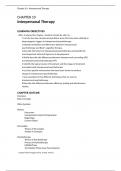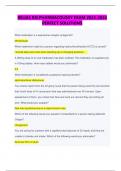Summary
Summary Consumer behaviour chapter 1, 4, 6, 8, 9, 10, 13 and belonging lectures 1-5
- Course
- Institution
- Book
Summary of the book consumer behaviour a european perspective. Complete summary for the first year students of the NHTV. chapter 1, 4, 6, 8, 9, 10 and 13, together with the lectures. Both useful for the english course international tourism management and the dutch/ nederlandse opleiding toerisme ma...
[Show more]













